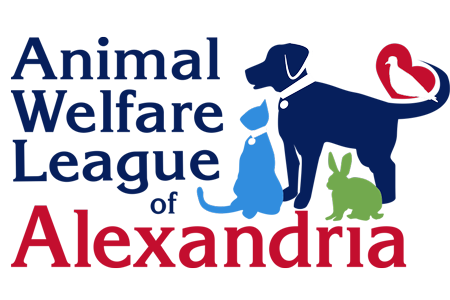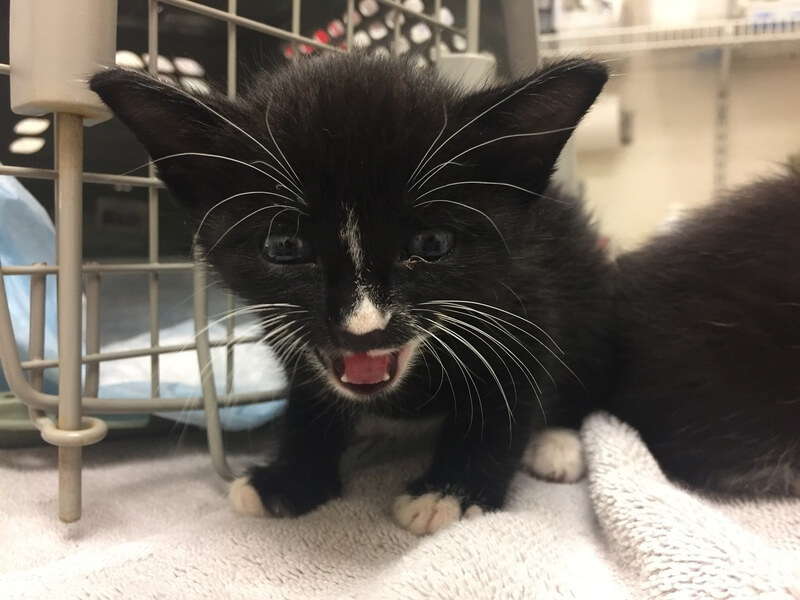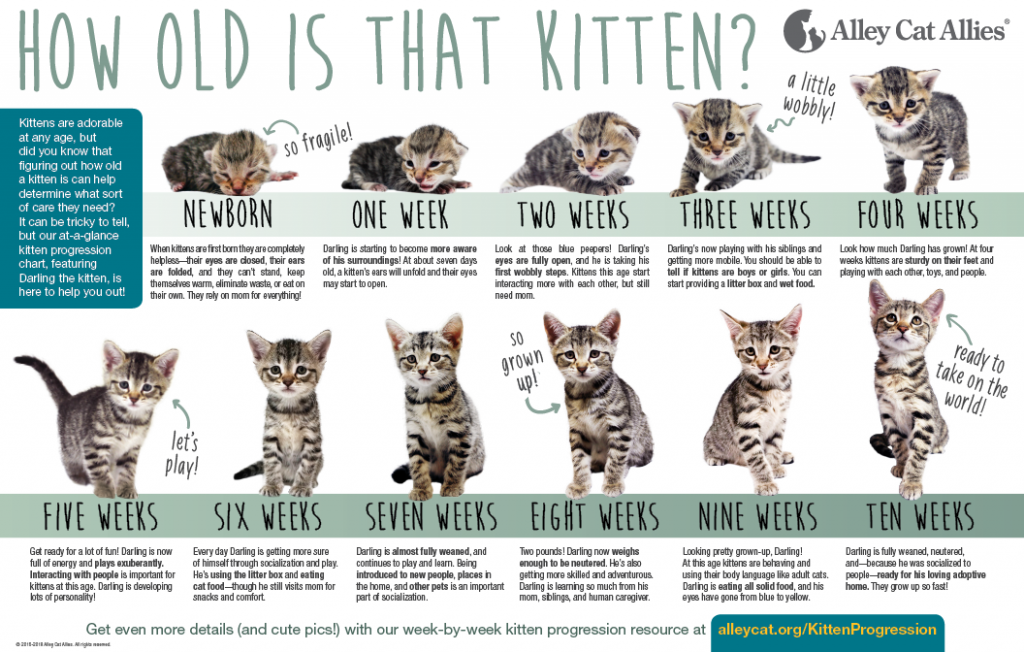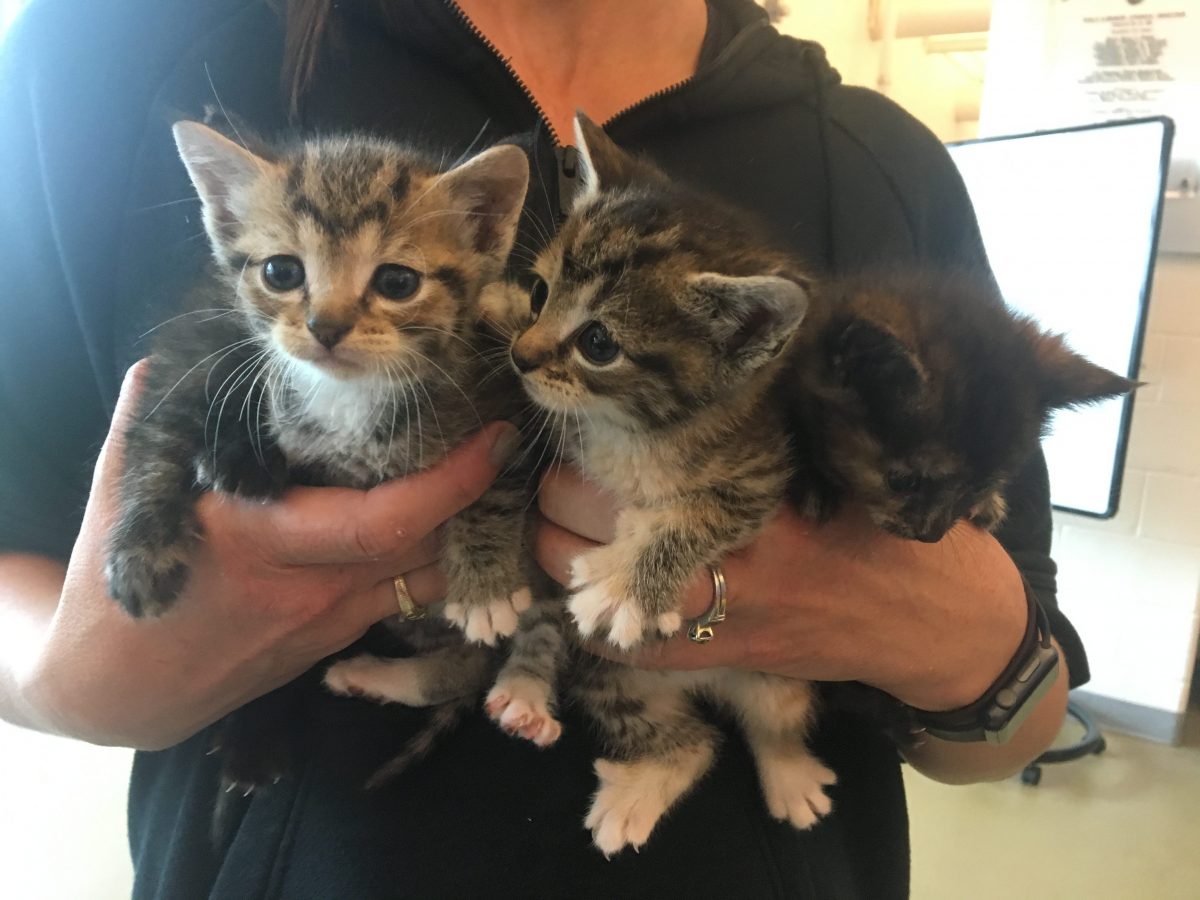 When you think of seasons, you probably consider, spring, summer, winter and fall, but another very important season at the AWLA is “Kitten Season.” Spanning as long as eight or nine months, Kitten Season begins when our first newborn kitten comes to us in the earliest months of the year, and lasts until our final kitten is adopted in the autumn.
When you think of seasons, you probably consider, spring, summer, winter and fall, but another very important season at the AWLA is “Kitten Season.” Spanning as long as eight or nine months, Kitten Season begins when our first newborn kitten comes to us in the earliest months of the year, and lasts until our final kitten is adopted in the autumn.
At the beginning of the season, our staff starts to receive inquiries from local friends of animals. “I found some abandoned kittens outside. Should I bring them to the shelter?” Our answer is usually “Not yet”. We know that everyone wants to help kittens in need, but often, even if you can’t see her, Mama Kitty is probably nearby, and the kittens have the best chance to thrive if they can stay with her as long as possible; however, if Mom does not return to her babies within a few hours, then it is time to intervene.
One of the most important factors our staff takes into account when figuring out how to help neonatal or newborn kittens is how old they are. The size of kittens — based on both their age and weight — affects the type of care they will receive, and each receives attention as soon as they come through the shelter doors. You can get an idea about how kittens look, and what assistance they may need at that age, using this helpful chart from Alley Cat Allies.
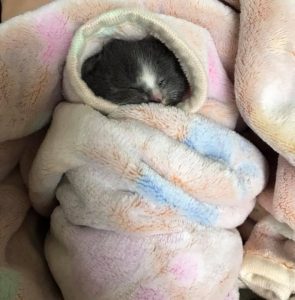 While some kittens will come to us with their mothers, for those that don’t, our staff and foster caregivers serve as a parent, giving them the care, attention and training that they would normally receive from a mama cat. For example, very young kittens are unable to regulate their own body temperature, so staff members’ first step is to use fleece blankets to create a “purrito” to keep kittens feeling cozy and safe.
While some kittens will come to us with their mothers, for those that don’t, our staff and foster caregivers serve as a parent, giving them the care, attention and training that they would normally receive from a mama cat. For example, very young kittens are unable to regulate their own body temperature, so staff members’ first step is to use fleece blankets to create a “purrito” to keep kittens feeling cozy and safe.
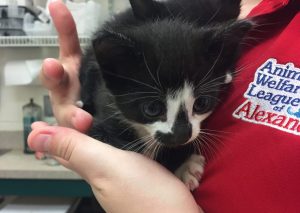 Our littlest kittens also use Snugglesafes that replicate mom’s warmth and heartbeat, providing kittens with comfort and a little extra warmth. Our staff and foster caregivers focus so heavily on monitoring young kittens’ body temperature because when kittens are too cold or warm, they are not able to digest food properly, which is essential to the growth process.
Our littlest kittens also use Snugglesafes that replicate mom’s warmth and heartbeat, providing kittens with comfort and a little extra warmth. Our staff and foster caregivers focus so heavily on monitoring young kittens’ body temperature because when kittens are too cold or warm, they are not able to digest food properly, which is essential to the growth process.
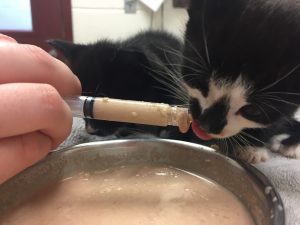 Next up is snack time! Kittens require feeding every few hours, which for our youngest kitties means a bottle or syringe. Kittens are not able to start eating some solid food until they are four weeks old and even then, it is introduced slowly. Our kitten caregivers measure each little one’s food based on their age and weight to make sure they are getting their proper nutrition at each feeding.
Next up is snack time! Kittens require feeding every few hours, which for our youngest kitties means a bottle or syringe. Kittens are not able to start eating some solid food until they are four weeks old and even then, it is introduced slowly. Our kitten caregivers measure each little one’s food based on their age and weight to make sure they are getting their proper nutrition at each feeding.
Once kittens are warm and fed, they receive a medical check up, which they will receive regularly at the AWLA until they are old enough to find families of their own.
 After they finish all of their medical evaluations, kittens are ready to head to their foster caregivers, who take care of them like mom would until they are old enough to be spayed or neutered and then find homes. From their fosters, kittens learn how to eat, use their litter box, explore new things with confidence and meet new people and animals. With some kittens who’ve never interacted with humans, this socialization requires extra time, patience and love until that kitten is ready to trust, but for every kitten it is essential for them to become happy, healthy pets with their new families.
After they finish all of their medical evaluations, kittens are ready to head to their foster caregivers, who take care of them like mom would until they are old enough to be spayed or neutered and then find homes. From their fosters, kittens learn how to eat, use their litter box, explore new things with confidence and meet new people and animals. With some kittens who’ve never interacted with humans, this socialization requires extra time, patience and love until that kitten is ready to trust, but for every kitten it is essential for them to become happy, healthy pets with their new families.
While our kittens are with their foster caregivers, they receive lots of love and care in addition to getting practice in front of the camera!
How can you help Alexandria’s kittens?
Check our Amazon Wish List to see some of the items that our staff and fosters need most. Donated items from the list can be shipped directly to the shelter or picked up at your local pet store and dropped off in person. You can also learn more about becoming a foster caregiver, whether for kittens or any of our animals in need.

